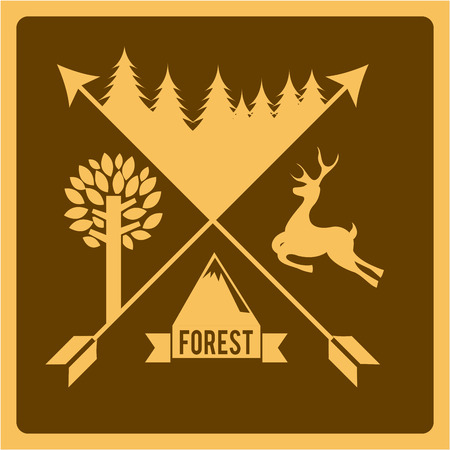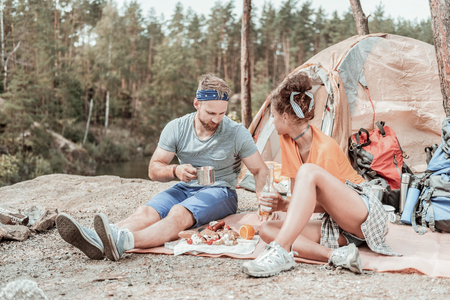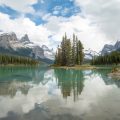The Science of Camp Stove Efficiency
When it comes to outdoor cooking, especially in the unpredictable weather conditions often found across the United States, understanding how your camp stove performs under different circumstances is critical. Heat output and wind protection are two fundamental factors that directly impact your ability to cook efficiently at your campsite. Heat output, usually measured in BTUs (British Thermal Units), determines how quickly you can boil water or cook a meal. However, even a high-BTU stove can fall short if it lacks proper wind protection—because gusts can steal away heat before it ever reaches your cookware. In real-world scenarios, like cooking breakfast during a breezy morning in the Rockies or making dinner at a windy lakeside in the Midwest, these performance aspects become more than just specs on a box—they’re essential to your success and comfort outdoors. By diving into the relationship between heat output and wind protection, you’ll be better prepared to choose gear that stands up to America’s wild weather and keeps you fueled for adventure.
2. How Wind Impacts Cooking in the Wild
When you’re out in the backcountry, even a gentle breeze can mess with your dinner plans more than you might expect. Wind does more than just chill the air—it can strip heat away from your camp stove and cookware, making it tough to get water boiling or keep your chili simmering. This isn’t just inconvenient; it can mean the difference between a hot meal and going to bed hungry. The main issues are longer boil times, increased fuel consumption, and sometimes even failed meals if the wind is strong enough.
Let’s break down how wind affects your cooking:
| Wind Speed | Boil Time (1L Water) | Fuel Usage | Meal Success |
|---|---|---|---|
| No Wind | ~5 minutes | Low | Consistently high |
| Mild Breeze (5 mph) | 7-8 minutes | Medium | Slightly reduced |
| Strong Wind (10+ mph) | 10+ minutes or fail to boil | High / wasteful | Often compromised |
Even a mild breeze will carry away precious heat before it reaches your pot, forcing your stove to work overtime. That means burning through more gas, which is a big deal if you’re counting ounces and planning for multiple days in the wild. Not only does wind jack up fuel usage, but it can also lead to uneven heating—leaving you with half-cooked noodles or scorched oatmeal. If you don’t plan for wind protection, dinner can take way longer than expected or simply flop altogether.

3. Common Wind Protection Strategies in the U.S.
When it comes to camp stove performance, wind is a notorious enemy—sapping heat and fuel while making outdoor cooking a real challenge. American campers have developed a range of practical strategies to combat this, blending both know-how and ingenuity to keep their meals hot and their coffee brewing. Let’s dive into some of the most effective wind protection tactics you’ll see in the U.S., from smart campsite selection to DIY hacks and purpose-built gear.
Campsite Placement: The First Line of Defense
The simplest—and often most overlooked—strategy is choosing your cooking spot wisely. Veteran campers know to look for natural windbreaks like boulders, dense shrubbery, or the lee side of hills. Setting up your stove on the downwind side of your tent or vehicle can also provide instant shelter. Remember, safety first: never cook inside your tent or in closed spaces due to carbon monoxide risk.
DIY Windscreens: Budget-Friendly Solutions
Many American backpackers love customizing their setups with homemade windscreens. A classic trick involves using heavy-duty aluminum foil folded into a stable barrier around the stove. Others repurpose lightweight baking sheets, or even cut-up aluminum roasting pans shaped to fit their gear. These DIY solutions are cheap, lightweight, and can be tailored for any stove model—just make sure there’s enough ventilation to avoid overheating the fuel canister.
Commercial Windscreens: Ready-Made Reliability
If you prefer plug-and-play convenience, there’s a wide market for commercial windscreens in the U.S. Brands like MSR, Jetboil, and Solo Stove offer foldable aluminum or titanium barriers designed specifically for camp stoves. These products are built for stability and optimal airflow—often with pegged feet or wraparound designs that anchor securely even in gusty conditions. Investing in a quality windscreen can save you fuel and frustration on longer trips.
Blending Strategies for Maximum Effectiveness
Real-world conditions often call for combining these methods: use a commercial screen behind a rock outcrop, or reinforce a DIY shield with snow blocks if winter camping. The goal? Create a protected microclimate where your stove delivers maximum heat output with minimum waste—no matter what Mother Nature throws your way.
4. Heat Output Realities: BTUs and Real-World Cooking
When you’re sizing up a camp stove for your next adventure, BTUs—British Thermal Units—are often the first stat that jumps off the spec sheet. But what do those numbers really mean when you’re trying to boil water at a windy mountain pass or whip up breakfast at a breezy lakeside campsite? Let’s break it down so you can make sure your stove delivers hot meals every time, not just impressive numbers in a catalog.
BTUs: The Basics
In simple terms, BTUs measure how much heat energy a stove can produce per hour. Higher BTU ratings theoretically mean more power and faster cooking times, but that’s only half the story. In real-world conditions, factors like wind, ambient temperature, pot size, and fuel efficiency play huge roles. Here’s a quick look at how common stoves stack up:
| Stove Type | Typical BTU Range | Best Use Case |
|---|---|---|
| Ultralight Canister Stove | 6,000–10,000 | Backpacking, solo trips |
| Integrated Canister System (e.g., Jetboil) | 4,500–9,000 | Fast boiling, efficient in moderate winds |
| Traditional Two-Burner Camp Stove | 10,000–20,000+ per burner | Car camping, group meals |
From Numbers to Noodles: What Really Matters?
A high BTU rating is great for boiling water quickly under ideal conditions. But outdoors, wind and cold sap away that performance fast. That’s where wind protection design and heat transfer efficiency come into play. For example, an integrated system with a modest BTU output may out-cook a “hotter” open-burner stove if it shields the flame and channels heat directly into your pot.
The Backpackers Reality Check
- If you’re backpacking at high elevations or in unpredictable weather, don’t chase the highest BTU number—instead, prioritize stoves with built-in wind screens or heat exchangers.
- If you’re car camping and want to cook pancakes for a crowd, higher total BTUs (and multiple burners) let you spread out the workload—but bring along some form of windscreen just in case Mother Nature gets feisty.
Pro Tip: Efficiency Over Raw Power
The best camp stove isn’t always the one with the most firepower. Look for a balance of heat output and smart design features that keep the heat where it counts—under your pot and out of the wind. Next time you shop for a stove, check real-user reviews about performance in actual field conditions—not just lab results.
5. Field-Tested Tips for Maximizing Stove Performance
If you want to get the most out of your camp stove when wind, cold, or unpredictable weather roll in, you need more than just a good product—you need real-world know-how. These field-tested strategies, collected from seasoned American campers and backcountry enthusiasts, will help you cook hotter, faster, and safer no matter what Mother Nature throws at you.
Choose Your Campsite Wisely
Location is everything. Whenever possible, set up your stove in naturally sheltered areas—behind boulders, dense bushes, or low-lying terrain. Avoid ridge lines or open fields where gusts can wreak havoc on your flame and heat output.
DIY Windbreaks: Quick & Effective
If natural shelter isn’t available, make your own. Carry a lightweight aluminum foil screen or repurpose rocks and gear to build a barrier around your stove. Just keep it at least a couple inches away from the burner to avoid trapping excess heat or causing safety hazards.
Optimize Fuel and Heat Output
Cold temperatures can sap performance from certain fuels. For canister stoves, keep fuel warm in your sleeping bag before use. If you’re using liquid fuel, prime the stove properly to ensure efficient combustion. Always check that connections are tight and clean for maximum output.
Use Lids and Windscreens Together
Always cover your pots with lids—it conserves heat and cuts cooking time dramatically. Combine this with a windscreen (homemade or commercial) for double the efficiency. This simple combo is a game-changer for boiling times and fuel savings.
Stabilize Your Setup
Wobbly stoves are dangerous and inefficient. Use a solid, level surface whenever possible—even if it means clearing ground or stacking flat rocks. Some American campers swear by compact folding tables designed for backpacking as a stable base in rough terrain.
Tactical Cooking: Plan Ahead
Prep meals that require less simmering or boiling time—think freeze-dried entrees, instant oats, or pre-cooked rice packs. Less time on the flame means less fuel burned and fewer chances for wind to disrupt your meal.
Bottom Line
The right tactics can turn a frustrating camp kitchen into a reliable outdoor command post. With these proven tips, you’ll be ready to handle whatever the wild throws at you—and enjoy hot meals even in tough conditions.
6. Choosing the Right Stove: What Matters Most for U.S. Outdoor Enthusiasts
When it comes to picking the perfect camp stove, American outdoor enthusiasts know that not all stoves are created equal. The best choice depends on where you plan to adventure—from the blustery Rockies to calm Appalachian forests—and how you like to cook in the wild. Let’s break down the most popular stove options by their wind protection and heat output, so you can match your gear to your camping style and the regions you explore.
Canister Stoves: Fast and Convenient
For backpackers hitting established trails or car campers who want a quick hot meal, canister stoves like the MSR PocketRocket or Jetboil Flash are a go-to. They’re lightweight, packable, and fire up fast. However, their wind protection varies—Jetboil systems often have integrated windshields, making them solid for exposed campsites in places like the High Sierra. On the other hand, basic burner styles need extra shielding to keep performance up when gusts pick up.
Liquid Fuel Stoves: Built for Extreme Conditions
If you’re venturing into unpredictable weather or higher altitudes—think Montana winters or alpine ascents—liquid fuel stoves such as the MSR WhisperLite International shine. These stoves deliver consistent heat output in cold temps and handle wind well with proper windshield setups. They’re heavier than canister models but offer reliability and power for melting snow or cooking for groups when Mother Nature turns fierce.
Integrated Systems vs. Modular Stoves
Integrated systems like Jetboil or MSR WindBurner combine pots and burners for maximum efficiency and built-in wind resistance—ideal for solo hikers or duos who value speed over gourmet meals. Modular stoves let you mix and match pots, pans, and accessories, giving more flexibility for group cooking but sometimes sacrificing wind protection unless paired with aftermarket shields.
Heat Output: Matching BTUs to Your Needs
BTU ratings matter: More isn’t always better, but enough power helps boil water quickly when time counts—say, on a chilly morning in Yellowstone. For simmering delicate foods or making pancakes at a Midwest state park, stoves with adjustable flame control are key. Think about what’s on your menu and match stove output to your style.
Wind Protection: A Critical Factor Across Regions
No matter where you roam in the States, sudden gusts can turn meal prep into a battle. Look for stoves with built-in windshields or designs that shield the burner from crosswinds—especially crucial if you frequent exposed coastal sites or camp above tree line in Colorado.
The Takeaway: Fit Your Stove to Your Adventure
The right camp stove isn’t just about weight or price—it’s about how well it stands up to real-world conditions where you’ll use it most. Compare stove options with an honest look at heat output and wind protection for your typical U.S. destinations. A little research goes a long way toward hot coffee at sunrise, no matter what the weather throws your way.


